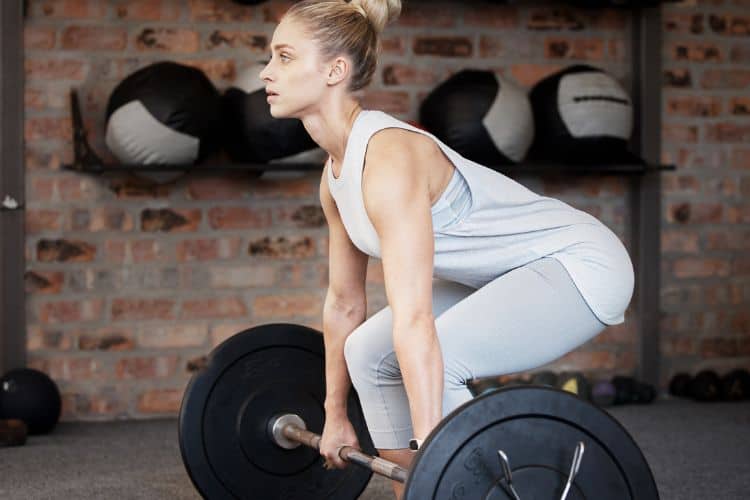Barbell Training Program for Progressive Strength Gains
Barbell progressive strength training is one of the most effective and time-tested methods for building muscle, increasing raw strength, and improving overall athletic performance. By following a well-structured barbell program and applying the principle of progressive overload, you can steadily increase your lifting capacity and transform your physique over time. This guide will break down everything you need to know about barbell progressive strength training program — from understanding the fundamentals to following a step-by-step program designed to deliver consistent results.
What Is Progressive Strength Training?
Progressive strength training is a method of resistance training where you gradually increase the demands placed on your muscles over time. This usually means adding more weight to the barbell, increasing the number of repetitions, or improving your lifting technique to handle heavier loads.
The core concept is progressive overload — the idea that your muscles will only grow and become stronger when they are challenged beyond their current capacity. This ensures constant adaptation, preventing plateaus and helping you achieve long-term gains.
Why Use Barbells for Progressive Strength Training Program
Barbells are considered one of the most efficient tools for strength development because they allow for:
- Heavier Loads: Barbells can hold significantly more weight than dumbbells or machines.
- Full-Body Engagement: Compound lifts like squats, deadlifts, and bench presses recruit multiple muscle groups.
- Progressive Loading: It’s easy to add small increments of weight to a barbell, making progressive overload straightforward.
- Strength Transfer: Barbell lifts build functional strength that transfers to sports, daily activities, and other training.
Benefits of a Barbell Progressive Strength Training Program
1. Steady, Measurable Progress
Tracking your lifts and adding weight over time gives you clear benchmarks and motivation.
2. Full-Body Muscle Development
Barbell training engages major muscle groups, promoting balanced strength across the entire body.
Stronger muscles and joints enhance your performance in sports and everyday movements.
4. Time Efficiency
A focused barbell program can deliver maximum strength benefits in minimal gym time.
5. Long-Term Adaptability
Programs can be scaled for beginners, intermediates, and advanced lifters.
Key Principles of Progressive Strength Training Program
Before jumping into the workout plan, it’s important to understand the main ways to apply progressive overload in barbell training:
- Increase Weight: Add small increments (2.5–5 lbs) to each side of the barbell.
- Increase Reps: Add one or two reps to your sets while maintaining good form.
- Increase Sets: Add an extra working set to increase volume.
- Improve Technique: Better form allows you to lift heavier safely.
- Reduce Rest Time: Increase intensity by shortening rest periods between sets.
Essential Barbell Exercises for Strength
A barbell progressive strength training program focuses heavily on compound lifts, which work multiple muscle groups at once.
1. Barbell Back Squat
- Primary Muscles: Quadriceps, hamstrings, glutes, lower back
- Benefits: Builds lower body power, core stability, and overall leg mass.
2. Barbell Deadlift
3. Barbell Bench Press
- Primary Muscles: Chest, shoulders, triceps
- Benefits: Builds upper body pushing strength and chest size.
4. Barbell Overhead Press
- Primary Muscles: Shoulders, triceps, upper chest
- Benefits: Improves shoulder stability and pressing strength.
5. Barbell Row
- Primary Muscles: Lats, traps, rear delts, biceps
- Benefits: Strengthens the upper back and supports other lifts.
Equipment You Need For Progressive Strength Training Program
To follow this program effectively, you’ll need:
- Olympic barbell (45 lbs standard)
- Weight plates (various sizes for progressive loading)
- Power rack or squat rack
- Flat bench (for bench press)
- Lifting belt (optional for heavy sets)
- Safety clips or collars
Barbell Progressive Strength Training Program (12 Weeks)
This program follows a linear progression model — you’ll increase the weight slightly each session while maintaining proper form. The program runs three days per week with rest days in between (e.g., Monday, Wednesday, Friday).
Workout A
- Back Squat – 4 sets of 5 reps
- Bench Press – 4 sets of 5 reps
- Barbell Row – 3 sets of 8 reps
- Accessory Work (Optional) – Planks or hanging leg raises for core
Workout B
- Deadlift – 3 sets of 5 reps
- Overhead Press – 4 sets of 5 reps
- Barbell Row or Pull-Ups – 3 sets of 8 reps
- Accessory Work (Optional) – Face pulls or barbell curls
Weekly Schedule
- Week 1–4: Start with manageable weights and increase 2.5–5 lbs per lift per session.
- Week 5–8: Continue adding weight, focus on keeping form strict.
- Week 9–12: Expect slower progress; micro-load (smallest possible increments) to avoid plateaus.
How to Progress Safely With Progressive Strength Training Program
1. Start Light
Begin with a weight you can lift comfortably for the prescribed reps with good form. This gives you room to progress steadily without early burnout.
2. Small Increments
Add small weight increases each session. For upper body lifts, increase by 2.5 lbs per side; for lower body lifts, increase by 5 lbs per side.
3. Listen to Your Body
If form breaks down, maintain the same weight until you can complete all reps cleanly.
4. Deload When Necessary
Every 6–8 weeks, reduce weight by 10–15% for a week to recover and prevent overtraining.
Nutrition for Strength Gains
Strength training success relies heavily on nutrition. Follow these guidelines:
- Caloric Surplus: Consume slightly more calories than you burn to support muscle growth.
- Protein Intake: Aim for 0.8–1g of protein per pound of body weight.
- Balanced Macronutrients: Include complex carbs for energy and healthy fats for hormone support.
- Hydration: Drink at least 3 liters of water daily for performance and recovery.
Recovery and Rest
Muscles grow outside the gym during recovery. Ensure:
- 7–9 Hours of Sleep: Critical for muscle repair and growth.
- Active Recovery Days: Light walking, stretching, or yoga to aid recovery.
- Proper Warm-Up and Cool-Down: Reduces injury risk and improves flexibility.
Common Mistakes to Avoid With Progressive Strength Training Program
- Skipping Warm-Ups: Increases injury risk and reduces performance.
- Adding Weight Too Quickly: Leads to poor form and potential injury.
- Neglecting Recovery: Overtraining stalls progress.
- Poor Technique: Always prioritize form over heavier loads.
- Ignoring Mobility Work: Limits range of motion and strength potential.
Tracking Your Progress With Progressive Strength Training Program
Use a training log or app to record:
- Weight lifted
- Sets and reps completed
- Notes on technique and how you felt during the session
This data will help you identify trends, adjust your program, and stay motivated.
Modifying Progressive Strength Training Program for Different Levels
Beginners
- Start with just the barbell to learn form.
- Increase weight slowly and focus on consistency.
- Use micro-loading (small weight jumps) for continued progress.
- Add accessory lifts to target weak points.
Advanced Lifters
- Cycle intensity and volume.
- Incorporate paused reps, tempo training, and variations for added challenge.
Long-Term Strength Development
After completing the 12-week program, you can:
- Restart with slightly heavier starting weights.
- Move to an intermediate program like 5×5 or Texas Method.
- Focus on specific lifts (powerlifting or Olympic lifting) for competitive goals.
Tips for Success
- Stay consistent — progressive overload only works with regular training.
- Eat to fuel performance, not just appearance.
- Focus on technique; it’s the foundation for long-term gains.
- Track and celebrate small victories — they add up over time.
A barbell progressive strength training program is one of the most effective paths to building lasting strength, muscle mass, and functional power. By starting with manageable weights, applying progressive overload, and committing to consistent training, you’ll see measurable improvements week after week.
Whether you’re a complete beginner or an experienced lifter, this structured approach will help you push past plateaus, improve your lifts, and develop the strength you’ve always wanted.
Want more workout and video guide?
Follow us on Pinterest, Facebook, and Subscribe to our Newsletter and Stay tuned for FREE downloads of our App coming soon!
Most Recommended





